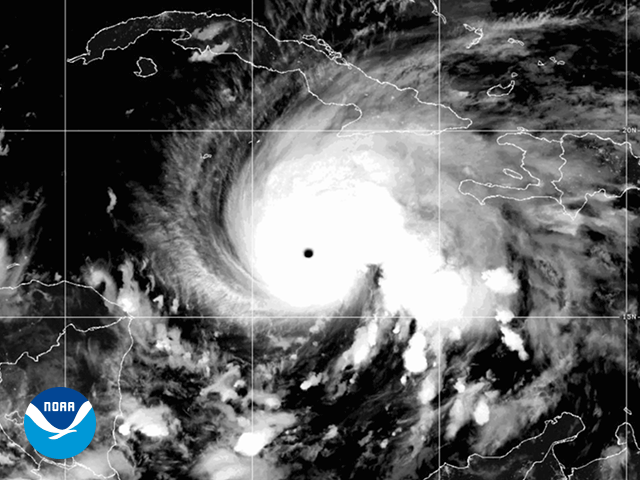Ag Weather Forum
Rapid Escalation of Hurricane Melissa Shows Climate Change Influence
Hurricane Melissa in the Caribbean Sea offers one of the latest examples of how sustained ocean and atmosphere warming is supporting the formation of intense, damaging storms. As of 10 a.m. EDT on Oct. 28, Melissa was a Category 5 storm with maximum sustained wind speeds of 185 mph. Hurricane Melissa is bearing down on the island of Jamaica; hurricane warnings for catastrophic winds, flooding and storm surge are widespread. Rain of up to 40 inches is expected on Jamaica. Hurricane Melissa is expected to be the strongest storm to hit Jamaica since recordkeeping began in 1851.
Meteorologist Jeff Masters of the Yale Climate Connection website noted that Melissa reached a maximum wind speed of 175 mph on Oct. 27, making it the strongest storm on Earth this year. Hurricane Melissa's 185-mph wind speed surpasses Typhoon Ragasa's 165-mph wind speed in the western Pacific Ocean. Those powerful wind speeds also indicate intense low pressure at the center of the storm. As 10 a.m. EDT on Tuesday, the National Hurricane Center reported the estimated minimum central pressure of Melissa at a staggering 892 millibars (mb) or 26.34 inches. That is more intense than Hurricanes Mitch in 1998 and Dean in 2007, which reached 905 mb or 26.72 inches.
P[L1] D[0x0] M[300x250] OOP[F] ADUNIT[] T[]
The source for this supercharged hurricane is not hard to find. A review of Atlantic Basin temperatures shows very warm water at both the surface and deep in the ocean profile. Tropical Atlantic Basin temperatures have been noted at 86 degrees Fahrenheit (30 degrees Celsius) at the surface. That value is 3.6 to 5.4 degrees F or 2 to 3 degrees C above normal. In addition, readings below the surface of well-above normal have been recorded. That broad, deep warmth offers a large supply of energy to support tropical system formation and strengthening.
Research by non-profit climate research organization Climate Central noted that "Ocean temperatures made higher by human-caused climate change are fueling more intense hurricanes in the Atlantic." Climate Central's study, published in late 2024, concluded that "Climate change caused the maximum wind speeds generated by roughly 80% of Atlantic Basin hurricanes from 2019 and 2023 to intensify by an average of 18 miles per hour." The 2024 hurricane season included calamitous storms Helene and Milton.
After Hurricane Melissa strikes Jamaica, its projected track then threatens part of Cuba along with the Bahama Islands. It is not projected to strike the mainland U.S. However, remnants of tropical systems have already brought occurrences of heavy rain and flooding to portions of the U.S. during the past summer and this autumn season. Deadly flooding in central Texas back in July and flooding in coastal Alaska in mid-October are two prominent examples of this damaging and deadly tropical impact.
Bryce Anderson can be reached at bryce.anderson@dtn.com
(c) Copyright 2025 DTN, LLC. All rights reserved.






Comments
To comment, please Log In or Join our Community .